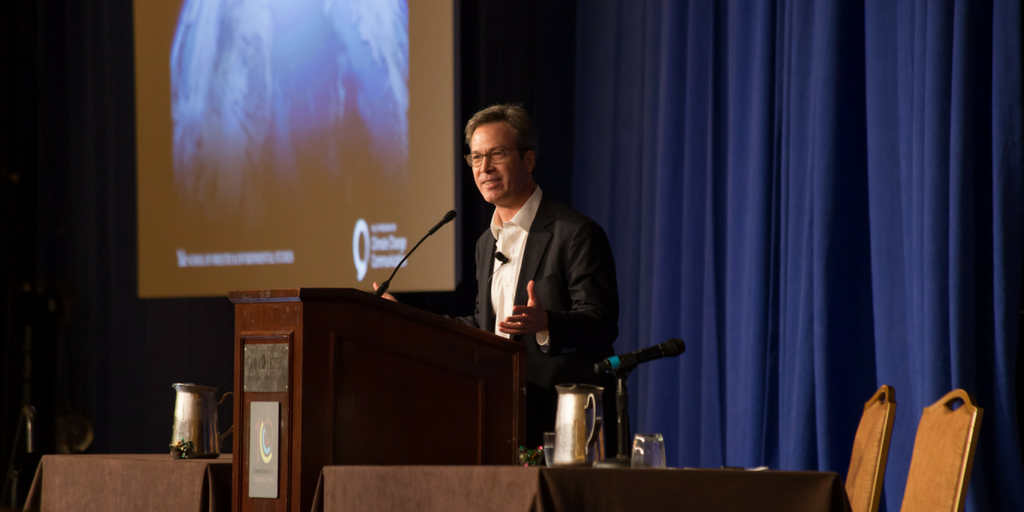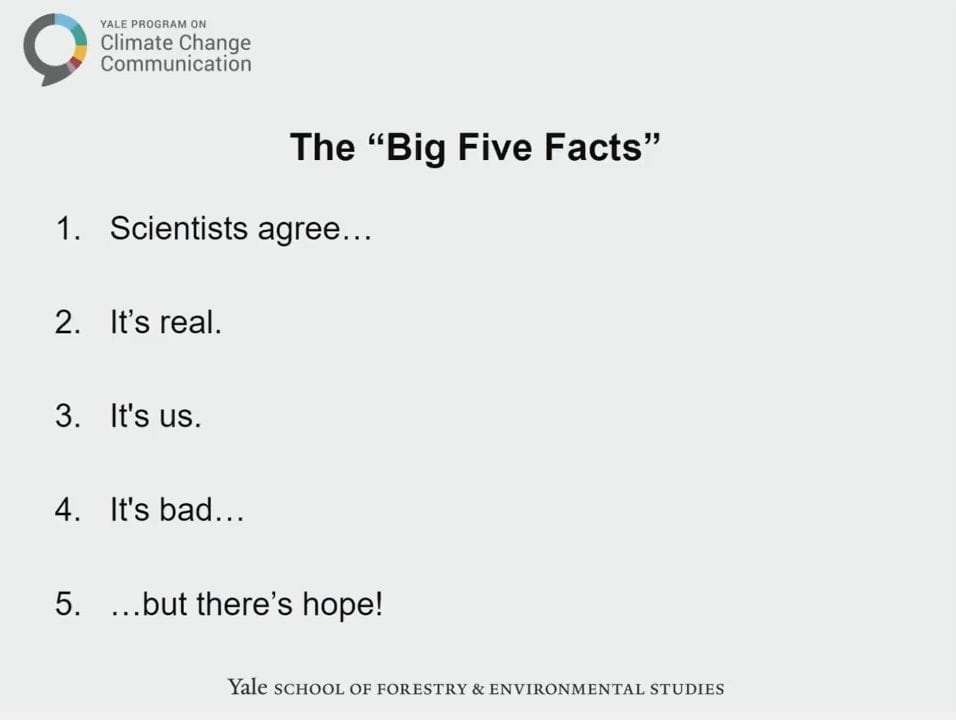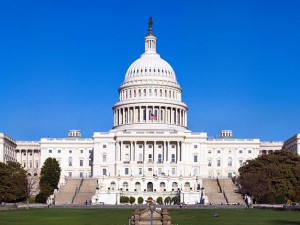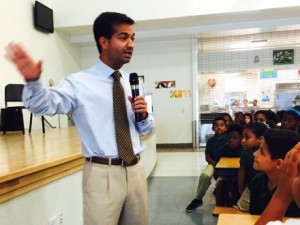By Flannery Winchester
At CCL’s national conference in D.C. earlier this month, Dr. Anthony Leiserowitz delivered a keynote chock full of statistics that illustrate the climate conversation happening in America. Dr. Leiserowitz is the director of the Yale Program on Climate Change Communication and senior research scientist at the School of Forestry and Environmental Studies at Yale University, where he investigates the psychological, cultural and political factors that influence environmental beliefs, attitudes, policy support and behavior.
Here’s what the numbers boil down to: Five key facts that everyone should know. Six audiences to address. An entire database of public opinion percentage points split out by geographical area, by party, by ideology and more. And—here’s the kicker—21 million Americans who are ready to put pressure on elected officials to act.
To get the details on every important number, watch his full keynote speech below, or read on for the recap.
Five key facts
People are busy. When there are kids who need dinner on the table, and bills to pay, and work to finish, staying plugged in to the latest climate research can fall pretty low on people’s to-do list. But that doesn’t mean they don’t care, said Dr. Leiserowitz. “There are millions of Americans who want to know the details. As a community, it’s our job to go more than halfway to meet them and give them the information.” So, he asked, what’s most important for them to know? It’s probably not crucial that they be able to spout the parts per million of carbon dioxide in our atmosphere at a given time. Instead, there are just five key ideas that everybody should know:
“Now this issue is complicated,” Dr. Leiserowitz acknowledged. “It’s global, it’s complex science and so on, but in the end this is as simple as it gets.” For each of these basic statements, there are dozens—sometimes thousands—of ways we know they’re true. Our job is to convey these ideas effectively, so that the conversation around climate change becomes one about solutions and hope. Dr. Leiserowitz said, “It’s absolutely critical that people have a sense of efficacy—of understanding that there are things that can be done, that you have the capability of doing them, and that if you do them, it will make a difference.”
How are we doing so far?
When it comes to understanding the key idea of “It’s real,” a pretty solid number of Americans are on board. “Back in 2008 we hit a high water mark in this country where 71% of Americans said yes, global warming is happening. It then dropped 14% points, bottoming out in 2010,” Dr. Leiserowitz explained. “In the past few years, it’s increased, and we’re back to close to an all time record at 70%.” So why the shift?
A closer look at the numbers reveal that the upswing is driven by an unexpected group. “Conservative Republicans have increased their acceptance of climate change 18 percentage points in just the past few years,” Dr. Leiserowitz said. The total acceptance in that group is at 46%, so there’s still a long way to go, but that’s already a remarkable shift. It’s also an important one, because as Dr. Leiserowitz pointed out, “Climate change doesn’t care whether you’re a Democrat or a Republican. Superstorm Sandy did not destroy the homes of Democrats and not Republicans. A drought doesn’t destroy the livelihood of just liberal ranchers and not conservative ranchers.”
Dr. Leiserowitz went on to explain that the numbers are less steady when you drill down into the other key ideas: “It’s us,” and “scientists agree.” Only about 55% of Americans understand that global warming is human caused, which makes it hard to convince them that humans should take action, such as implementing a carbon price, to correct it. “This is a critical indicator that still needs work,” Dr. Leiserowitz said. Americans are also confused about the nature of the scientific consensus on this topic. “About 97% of climate scientists are convinced, based upon the evidence, that human caused global warming is real.” There is plenty of discussion about the extent of climate change’s impact, he said, “But about the fundamentals that climate change is real and is human caused—there is literally no debate.” Unfortunately, only 15% of Americans correctly understand that, so there’s still plenty of work to do to get these five key ideas out there.
Know your audiences
When you head out to spread those five facts about climate change, also keep in mind who you’re talking to. YPCCC has identified six distinct audiences over the years. To communicate effectively with them, you have to ask, “Who are they? Where are they starting from? What are their underlying values? Who do they trust? Where do they get their information? Then and only then can you really be effective at trying to engage them,” Dr. Leiserowitz explained.
The six groups are categorized by their attitudes toward climate change, and they are: alarmed, concerned, cautious, disengaged, doubtful, and dismissive. Those who are alarmed—which describes pretty much everyone in CCL—are strongly concerned about the issue. On the other end of the spectrum are those who are dismissive—these are the ones often filling up online comment sections with climate denial and conspiracy theories. They tend to dominate the public square and intimidate many people from talking about climate change. “It’s easy to come away with the impression that it’s half or more of the country that thinks the same way. But it’s not,” Dr. Leiserowitz stressed. This group is only 9% of the population.
21 million strong
How willing or unwilling would you be to join a campaign to convince elected officials to take action to reduce global warming? If you’re reading this, the answer is probably “very!” Well good news: you’re not alone. In YPCCC’s research, 21 million people answered that they were willing to join such a campaign or already were part of one. By contrast, the NRA is around 4 million. Think of the influence an organized group of 21 million climate champions could have!
A key factor in this group is that, by nature, it’s diverse. Climate change is so fundamental to life on earth that every human being has a direct stake in it. “What we’re beginning to see is that it’s not just the scientists speaking, it’s not just environmentalists, and it’s not just liberal politicians,” Dr. Leiserowitz said. “We are beginning to hear the voices of every type of person in this country and around the world speaking out.” That includes doctors and nurses, faith leaders, military, businesses of all sizes, and so on.
That diversity is even more obvious when you examine the YPCCC opinion maps, which show the state of climate beliefs and attitudes in every state, city, even county in America. It’s not just liberal bastions that show high engagement on climate issues. In fact, there are swaths of Texas that, thanks to Latinos, are as worried about climate change as sections of California! So that group of 21 million is not just “white, upper-middle class, latte-sipping liberals,” Dr. Leiserowitz joked. Instead, it’s a diverse group, and it’s going to take all of us together to achieve the world we want. “You have to get their voices into the conversation,” Dr. Leiserowitz said.
Because ultimately, it can’t just be pockets of counties here and there who are engaged on this issue. It needs to be every county. “We need to change the conversation about climate change where we live, back home, because that’s a huge influence on our elected officials,” Dr. Leiserowitz said. “Elected officials don’t just simply respond to the person standing right in front of them saying, ‘I want you to act.’ They’re paying very close attention to what’s going on back home.”
So with that, we’ll add one other number: 1,300. That’s how many engaged citizens showed up, volunteered their time and their money to attend CCL’s summer conference earlier this month. Armed with this powerful information from Dr. Leiserowitz’s keynote, they—and now, you—can go make the difference.







